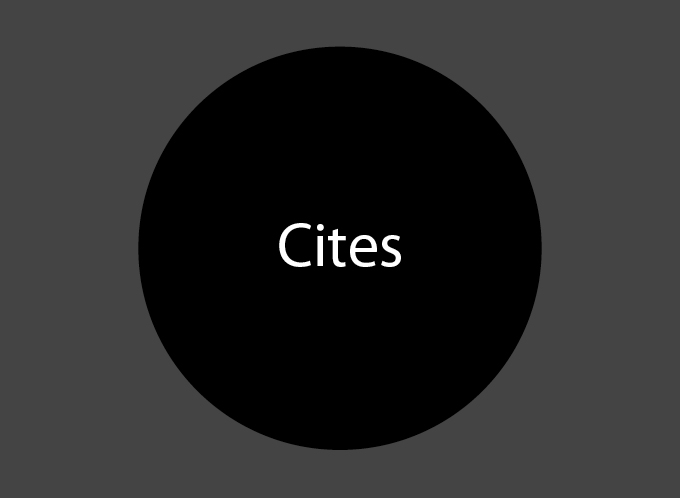Krockkudde som försvar
Kulfiskar har utvecklat ett udda sätt att försvara sig mot rovdjur. De har en elastisk mage som de kan fylla med antingen vatten eller luft, beroende på om de blir jagade under vattnet eller uppe vid ytan.
Känner en kulfisk sig hotad kan den blåsa upp sig likt en boll eller en krockkudde. Den kan bli tre gånger så stor som sin normala storlek. Detta gör att kulfisken blir mycket svårare att svälja för ett rovdjur.
Sötvattenskulfisk som blåst upp sig.
Bild: Friel-CC-BY-NC-SA
Uppblåst igelkottfisk.
En uppblåst stjärnkulfisk.
Bild: Tanaka-Juuyoh-CC-BY
Taggiga badbollar
Kulfiskar är inte de enda djuren som har det här sättet att försvara sig. Deras nära släktingar, igelkottfiskarna, har också den förmågan. Igelkottfiskar har dessutom taggar på kroppen som spänns ut när de blåser upp sig! Ännu svårare för ett rovdjur att svälja!
Agapaddan kan göra sig större genom att blåsa upp sig.
Bild: Colourbox
Pufformen puffar upp sig med luft för att verka större.
Bild: Bernard-Dupont
Kaloulagrodan är en av många grodarter som kan blåsa upp kroppen med luft för att verka större.
Bild: Poleta33-CC-BY-SA
Pufformar, grodor och paddor
Även helt andra djurarter blåser upp sig om de känner sig hotade. Flera arter av grodor och paddor kan fylla kroppen med luft och på så sätt göra det svårare för rovdjur att ta dem som byten. Pufformar puffar upp kroppen med luft och ser därför större ut än de är, för att undvika att bli uppätna.

Airbag as a defence
Blowfish or pufferfish have developed an unusual way to defend themselves against predators. They have an elastic stomach that they can fill with either water or air, depending on whether they are being hunted underwater or up on the surface.
If a blowfish feels threatened, it can blow itself up like a ball or an airbag. It can become three times bigger than its normal size. This makes the blowfish far more difficult for a predator to swallow.
An inflated fresh water Puffer fish.
Photo: Friel-CC-BY-NC-SA
An inflated Porcupine fish.
An inflated Starry puffer.
Photo: Tanaka-Juuyoh-CC-BY
Spiky beach balls
The blowfish is not the only animal that defends itself in this way. Its close relative, the porcupinefish, also has this ability. The porcupinefish also has spines on its body, which stick out when the fish inflates itself! So it’s even harder for a predator to swallow!
The Cane toad can make itself bigger by inflating.
Photo: Colourbox
The Puff adder puffs itself with air to seem bigger in the eyes of predators.
Photo: Bernard-Dupont
The Banded bullfrog is one of many species of frogs that is able to inflate itself to seem bigger.
Photo: Poleta33-CC-BY-SA
Puff adders, frogs and toads
Even completely different animal species inflate themselves if they feel threatened. Several species of frogs and toads can fill their bodies with air and thereby make it harder for predators to take them as prey. Puff adders blow up their bodies with air to look bigger than they are in order to avoid being eaten.

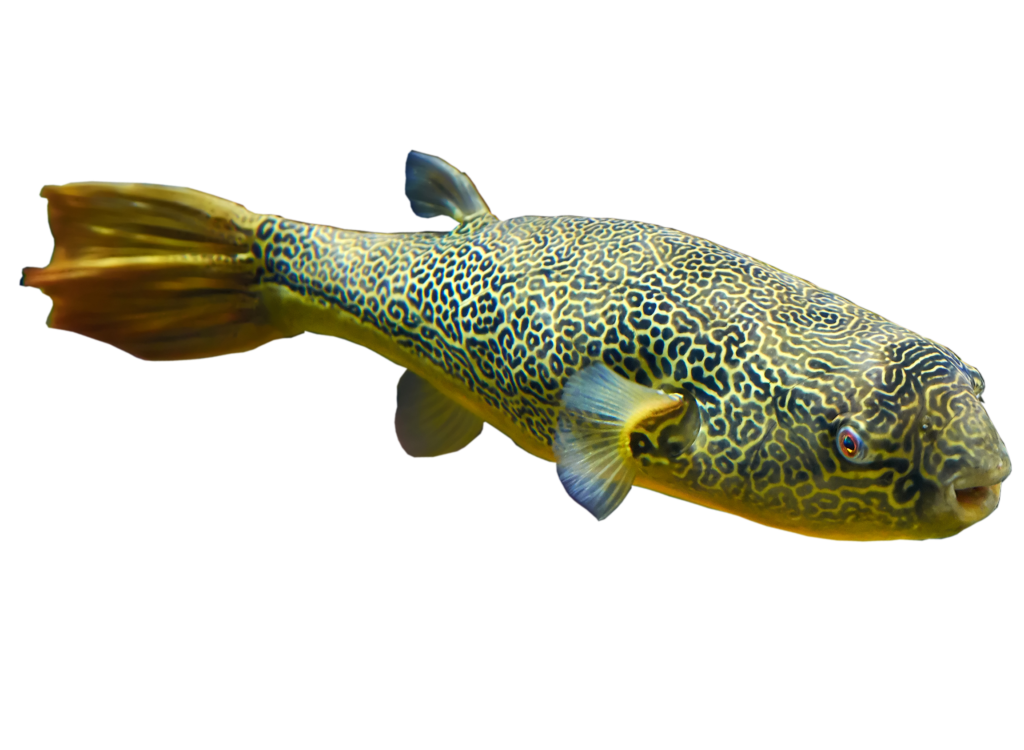
Giant Puffer
Tetraodon mbu
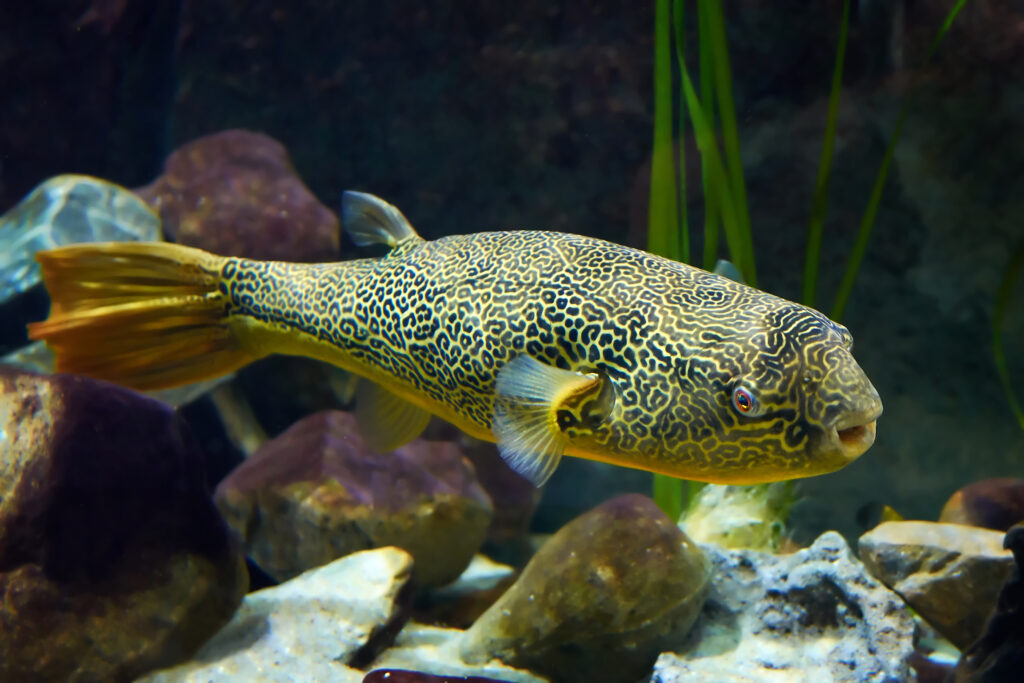
Cute but angry!
The giant pufferfish, or Mbu puffer, as it is also called, is the largest freshwater pufferfish species. Many people think it looks sweet but it is actually a fairly aggressive and dangerous fish!
Individual pufferfish can have very different personalities. Some of them cannot be kept anywhere near other fish of the same species. This aquarium’s two giant pufferfish usually get on with each other.
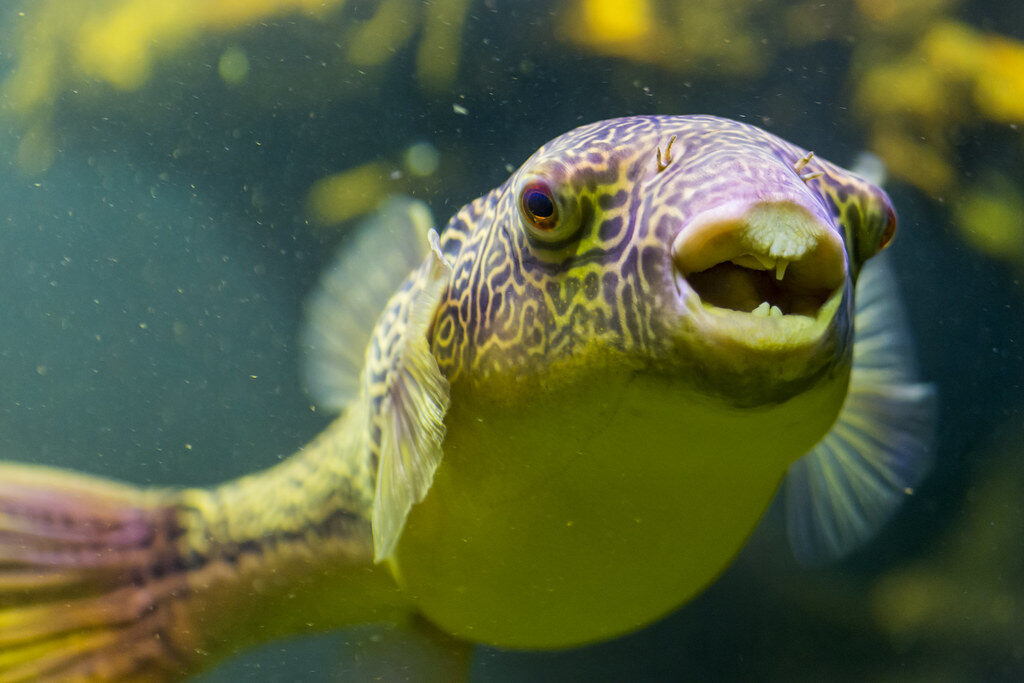
Photo: Tambako-the-Jaguar-CC-BY-ND
A sharp beak and beach ball shape
The giant pufferfish has front teeth that have merged to form a sharp and strong “beak”. It can use the beak to easily crush the shells of crabs and mussels. The beak is filed down when the pufferfish eats prey with hard shells but it grows out again.
When a pufferfish gets frightened or feels threatened, it can inflate its body with water and air to the size of a beach ball!
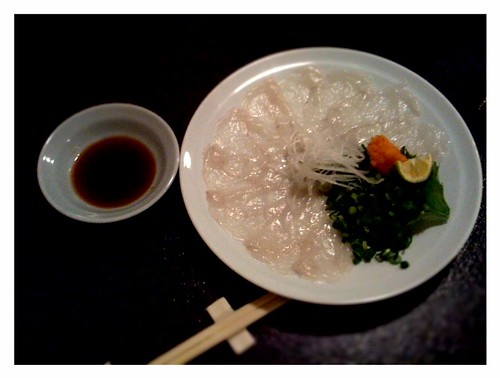
Photo: jasewong-CC-BY-NC-ND
Very poisonous
Many parts of the pufferfish’s body contain toxin. This makes them dangerous to eat, and some species are even deadly to humans. In Japan, pufferfish is considered to be a food delicacy, and is called “fugu”. Only specially trained chefs are allowed to prepare this dish.
Pufferfish poisoning paralyses the victim, who dies slowly of suffocation. The victim is conscious the whole time but can neither speak nor move.
Distribution worldwide

Central Africa from the river Congo to lake Tanganyika.
Threat based on the Red List

Trade regulations
CITES: Not listed.
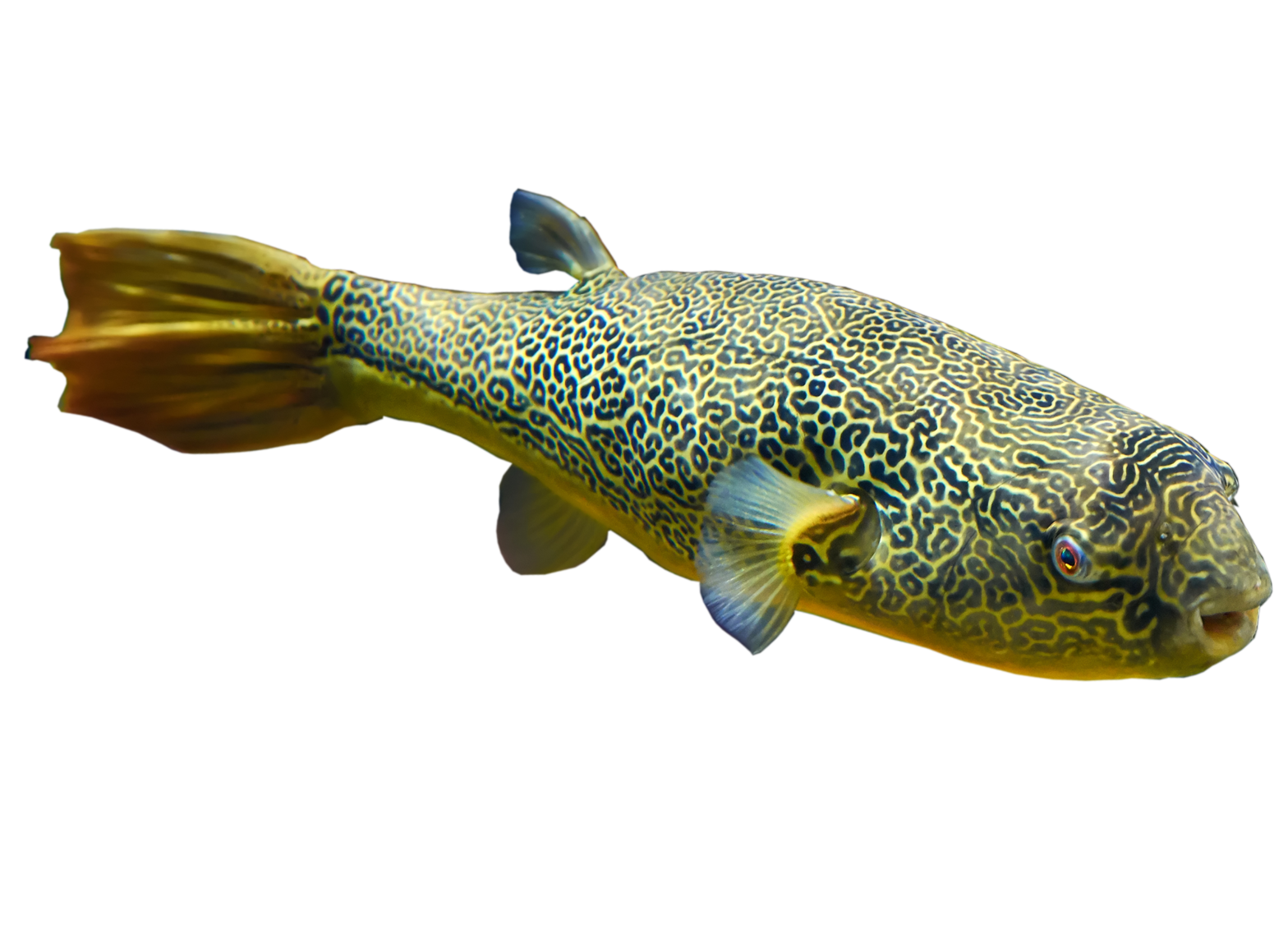

Peter’s Elephantnose Fish
Gnathonemus petersii
Facts
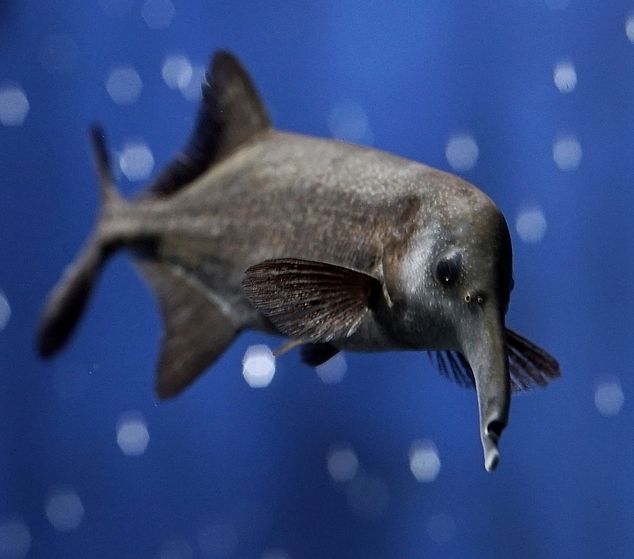
Fish with a trunk
Do you see the fish with a trunk? It’s not actually a proper trunk but more a kind of extension of the fish’s mouth. It’s not hard to guess where the elephantnose fish got its name from!
The elephantnose fish has a very large brain in relation to its body. In comparison with its body weight, its brain is actually bigger than ours!
Uses electricity to find its way
The elephantnose fish uses its “trunk” to poke about in the bottom sediment for food and to defend itself. But the trunk also has another function. It – and much of the rest of the rest of the fish’s head – are covered with masses of a kind of cell that senses electricity!
In the rear of its body, the fish has an organ that emits electrical signals. These signals bounce off the surroundings and back to the fish’s head and trunk. The elephantnose fish is active at night, and the water it lives in is often murky. Yet it can still orient itself and find food – thanks to its electrical sense.
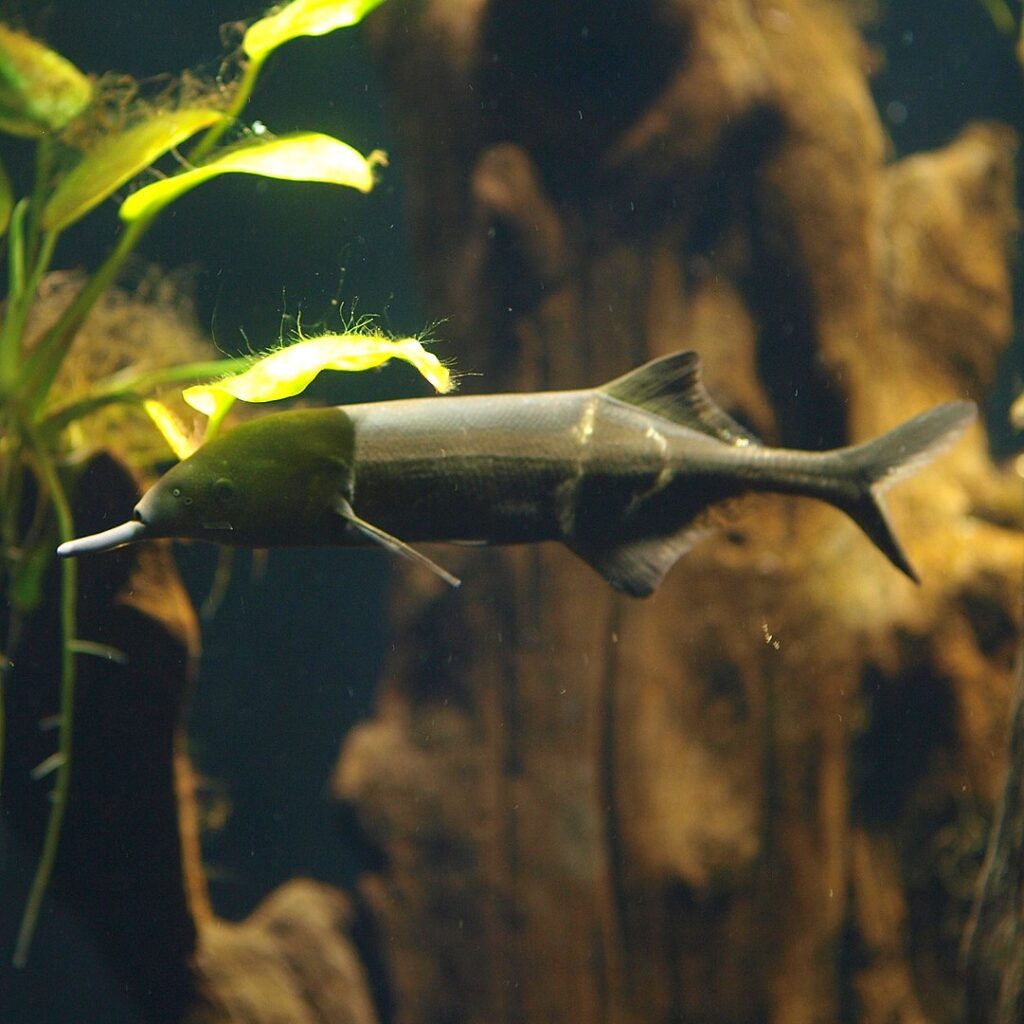
Speaks “electrical”
The electrical signals can also be used to communicate with other elephantnose fish. There are more than 200 species of elephantnose fish. Different groups of elephantnose fish have different electrical dialects. When an elephantnose fish wants to mate, it listens for another one that speaks the “right” dialect of “electrical”.
Distribution worldwide

Rivers of western and central Africa.
Threat based on the Red List

Trade regulations
CITES: Not listed.

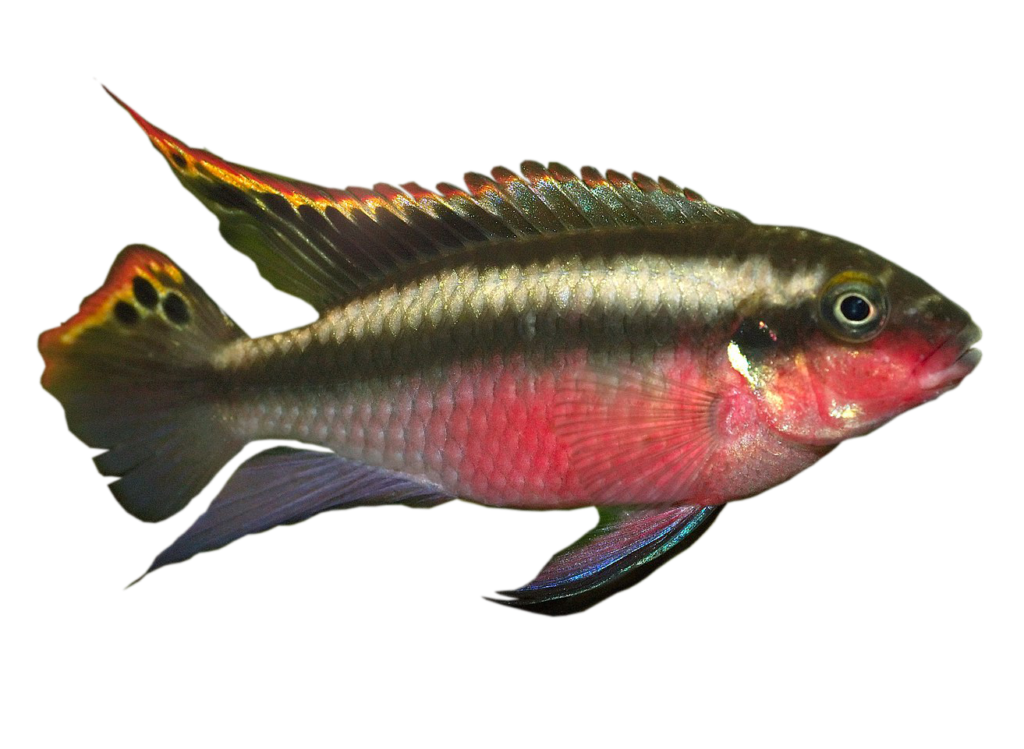
Kribensis
Pelvicachromis pulcher
Facts

Photo: Tino Strauss-CC-BY-SA
A common aquarium fish
This fish has many names, including kribensis, krib, rainbow cichlid and purple cichlid. It thrives best in lakes or slowly flowing rivers or streams with lots of vegetation on the bottom. This is one of the most common fish species sold in aquarium shops. Some reasons for this are that it is easy to care for, functions well with many other fish, and is not fussy about its food. It reproduces easily in captivity.
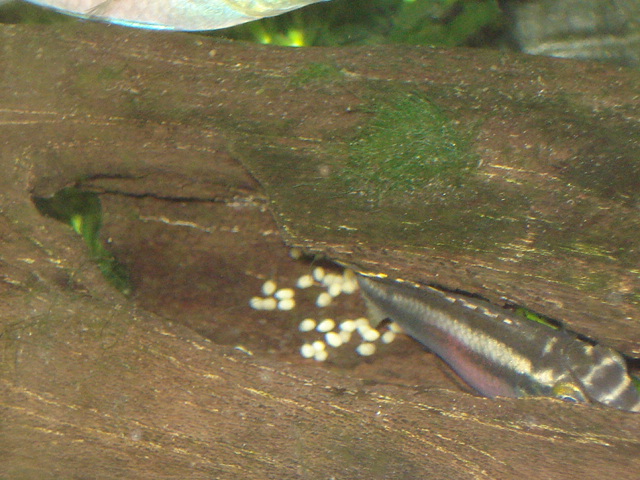
Photo: Irina-Vargas
Mates in caves
At mating time, this fish looks for a cave. If it doesn’t find an existing one, it can dig one in the lakebed or riverbed. There the fish mate and the eggs are laid.
After the eggs are laid, both the female and male help to guard the eggs and keep their surroundings clean until they hatch. After the larvae hatch, they stay close to their parents, who feed them and protect them against predators. After about three to four weeks, the juvenile fish are ready to look after themselves without their parents.
Distribution worldwide

The Niger Delta in western Africa.
Threat based on the Red List

Trade regulations
CITES: Not listed.
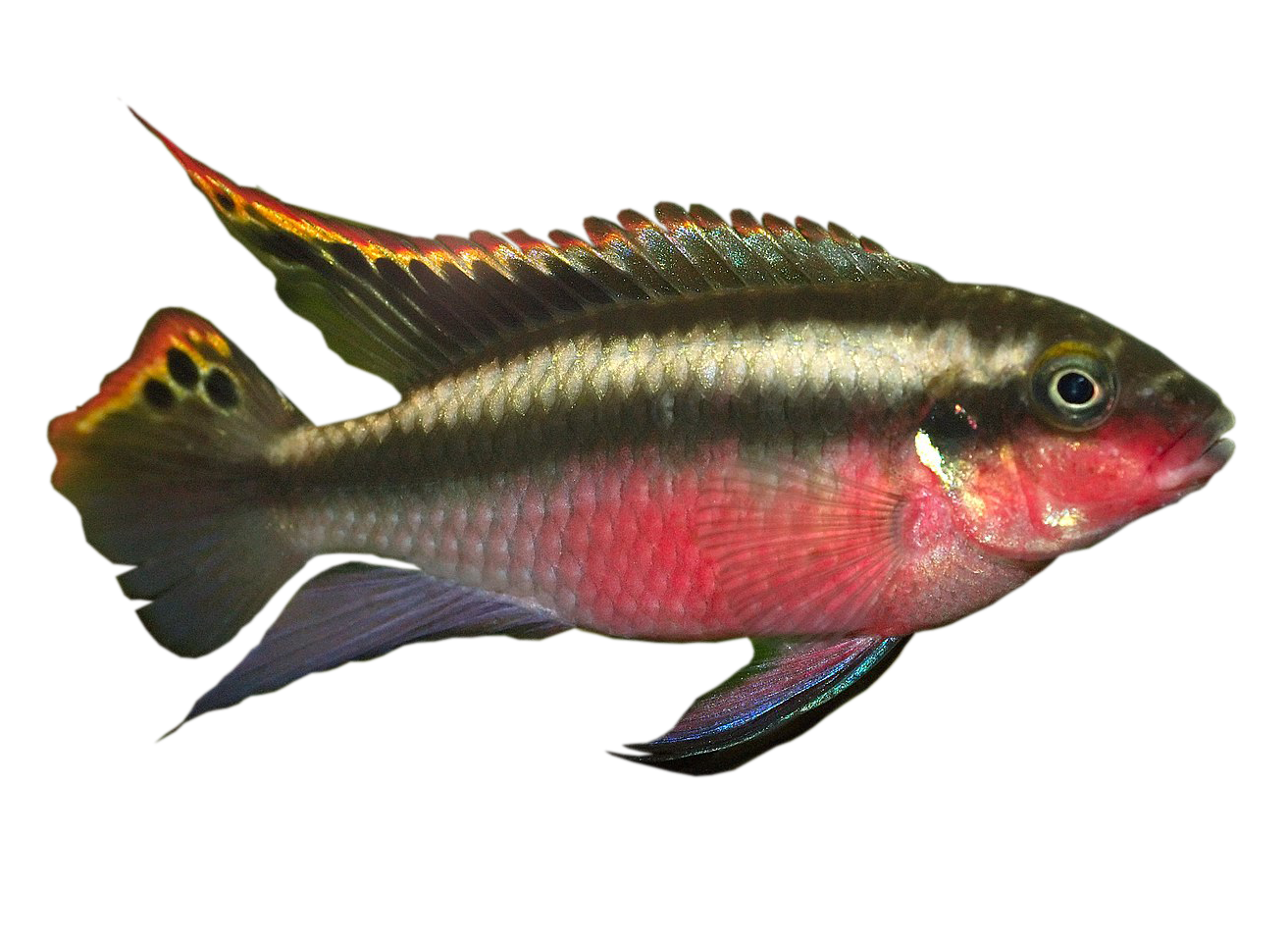
What is the Red List?
The Red List is a way to assess whether different animal and plant species are at risk of extinction based on criteria such as how many animals or plants of a species exist and how widely distributed they are. A national Red List assesses a species’ risk of dying out within national borders. The international Red List assesses a species’ risk of dying out worldwide.
Read more

About the Red List in Sweden: The Swedish Species Information Centre (Artdatabanken), https://www.artdatabanken.se/en/
About the Red List worldwide: The International Union for Conservation of Nature (IUCN), www.iucn.org

What is CITES?
CITES (the Convention on International Trade in Endangered Species of Wild Fauna and Flora) is a treaty that makes it illegal to buy or sell animals and plants that are at risk of extinction between countries without a permit.
CITES classifies species into different categories (called Appendix I, II and III) depending on how endangered each species is. In addition, the more the species is threatened by international trade, the higher its level of protection. Within the EU, CITES-listed species are further classified and protected by the EU’s own classification system. This has four Annexes, from A to D.
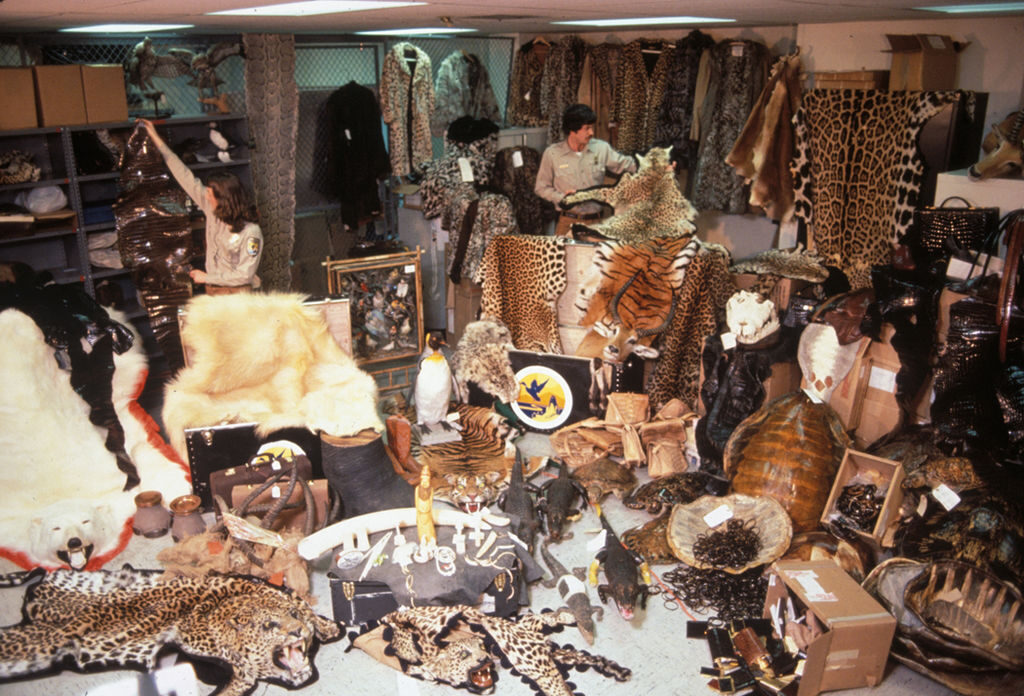
Photo: Steve-Hillebrand
Ban on trading wild-caught species
The highest protection against trade is given to CITES-listed species included in the EU’s Annexes A and B. Usually this means that trade between the EU and the rest of the world is illegal without a permit. There is also a ban on trading these species within the EU unless it can be proved that they have a lawful origin and were not caught in the wild.
It is also forbidden to use plants or animals to make souvenirs etc. Anyone who breaks these regulations can be fined or imprisoned.
Controlling the spread of species

CITES-listed species that are in the EU’s Annex C are classified as endangered in at least one country but not necessarily in the whole world. An Annex D classification means that individual members of a species may be imported to the extent that they do not need to be regulated to avoid any risk of them spreading uncontrollably where they do not belong.
